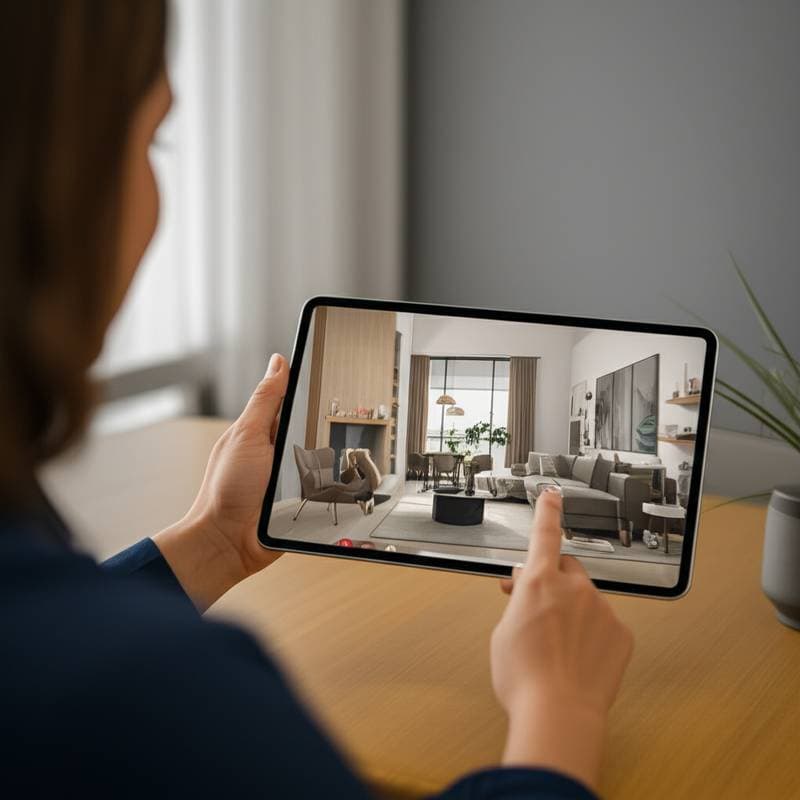AI-Powered Interior Design Apps Enter the Mainstream
Imagine accessing a dedicated interior designer capable of rendering your ideal room arrangement, recommending suitable furnishings, and fine-tuning illumination to match your tastes—all in moments. Artificial intelligence now powers such capabilities in interior design, reshaping the approach individuals take to planning and outfitting their residences. These tools have evolved beyond experimental phases to serve as indispensable aids for homeowners, tenants, and design experts.
This article examines leading AI interior design applications, highlighting their innovative features, user accessibility, and practical outcomes. It also outlines essential considerations for selecting the right app, empowering you to realize your design concepts with assurance.
Evaluation Methodology
The assessment focused on five primary factors: accuracy, user-friendliness, personalization, visual authenticity, and overall value. Each app underwent scrutiny for its ability to process user directives, accommodate spatial measurements, and produce lifelike digital simulations. Additional tests covered collaborative functionalities, furniture catalog integration, and performance across mobile and desktop platforms. Team members dedicated extensive time to simulating room configurations, experimenting with illumination variations, and arranging decor elements, verifying that recommendations translate effectively to physical environments.
Recommended AI Interior Design Applications
1. Planner 5D - Top Choice for Comprehensive Use
Overview: This application merges straightforward navigation with sophisticated AI rendering, suiting novices and seasoned users alike.
Advantages:
- Precise 3D simulations
- Straightforward drag-and-drop functionality
- Extensive selection of furnishings and surface options
Disadvantages:
- Advanced capabilities demand a paid membership
In-Depth Analysis:
Planner 5D stands out as the premier option due to its equilibrium of robust features and ease of operation. The AI system rapidly analyzes uploaded floor plans and proposes design alternatives tailored to individual preferences. In evaluations, the app excelled at creating complete, furnished interiors that appeared remarkably lifelike, complete with accurate proportions and material textures. Users benefit from professional-grade outputs without navigating complex interfaces, making it suitable for detailed project planning from initial sketches to final visualizations.
2. RoomGPT - Ideal for Rapid Room Refresh
Overview: Perfect for those seeking immediate stylistic ideas based on photographs of existing spaces.
Advantages:
- Swift production of redesigned room visuals
- Convincing renderings
- Operates efficiently from one uploaded image
Disadvantages:
- Restricted options for in-depth modifications
In-Depth Analysis:
RoomGPT shines in scenarios requiring fast aesthetic overhauls. Users upload a room photograph, select a preferred theme, and receivereinterpretations almost instantly. Testing revealed strong performance in suggesting harmonious color combinations and optimal furniture arrangements that aligned closely with real-world feasibility. Although it offers limited fine-tuning, this app proves invaluable for exploring potential updates without the commitment of physical alterations, saving time and reducing decision-making uncertainty.
3. DecorMatters - Optimal for Team-Based Creativity
Overview: A platform that integrates AI analytics with communal input for dynamic design experiences.
Advantages:
- Built-in network for exchanging design concepts
- Intelligent suggestions derived from personal tastes
- Direct connections to furniture retailers
Disadvantages:
- Layout may overwhelm beginners
In-Depth Analysis:
DecorMatters fuses algorithmic precision with user-generated content to inspire collaborative projects. Over repeated interactions, the AI refines its recommendations to reflect evolving user styles, proposing arrangements that resonate on a personal level. Evaluations highlighted its strength in merging inspirational elements with actionable steps, such as sourcing items from integrated vendor links. This app appeals to individuals who value community feedback alongside AI support, enabling expressive designs that evolve through shared insights.
Key Considerations for Selecting an AI Interior Design App
User-Friendliness
Prioritize platforms with instinctive controls that allow seamless room previews and adjustments, eliminating the need for extensive guidance.
Precision and Visual Fidelity
Seek applications that generate high-fidelity images with exact scaling for objects, ensuring virtual plans align with tangible implementations.
Personalization Features
Opt for tools providing extensive choices in hues, fabrics, and configurations to craft uniquely tailored outcomes.
Connectivity and Versatility
Evaluate apps that interface with home automation systems or facilitate in-app purchases, streamlining the transition from concept to execution.
Cost Structure
Basic editions often suffice for initial explorations, while upgraded plans typically access superior graphics and broader resource libraries.
Common Queries About AI Interior Design Tools
Do these applications fully substitute for expert interior designers?
They serve as powerful aids for ideation and prototyping but cannot replicate the intuitive expertise, innovative flair, and contextual sensitivity that human professionals bring to complex projects.
Elevate Your Space with Informed AI Choices
By integrating these AI applications into your design process, you gain tools that democratize professional techniques, fostering creativity and efficiency. Start with a simple upload or sketch to unlock possibilities that once required expert consultation. The result: spaces that reflect your vision, achieved with minimal effort and maximum impact.
